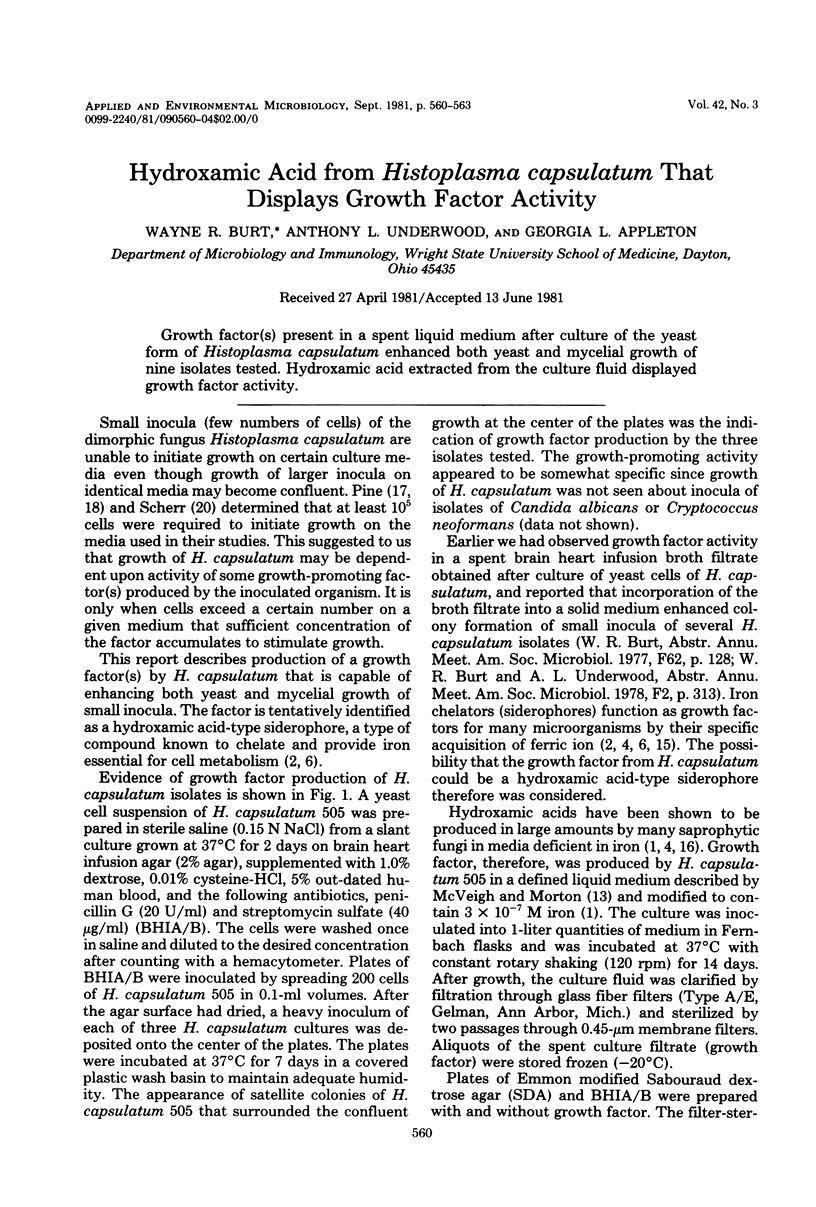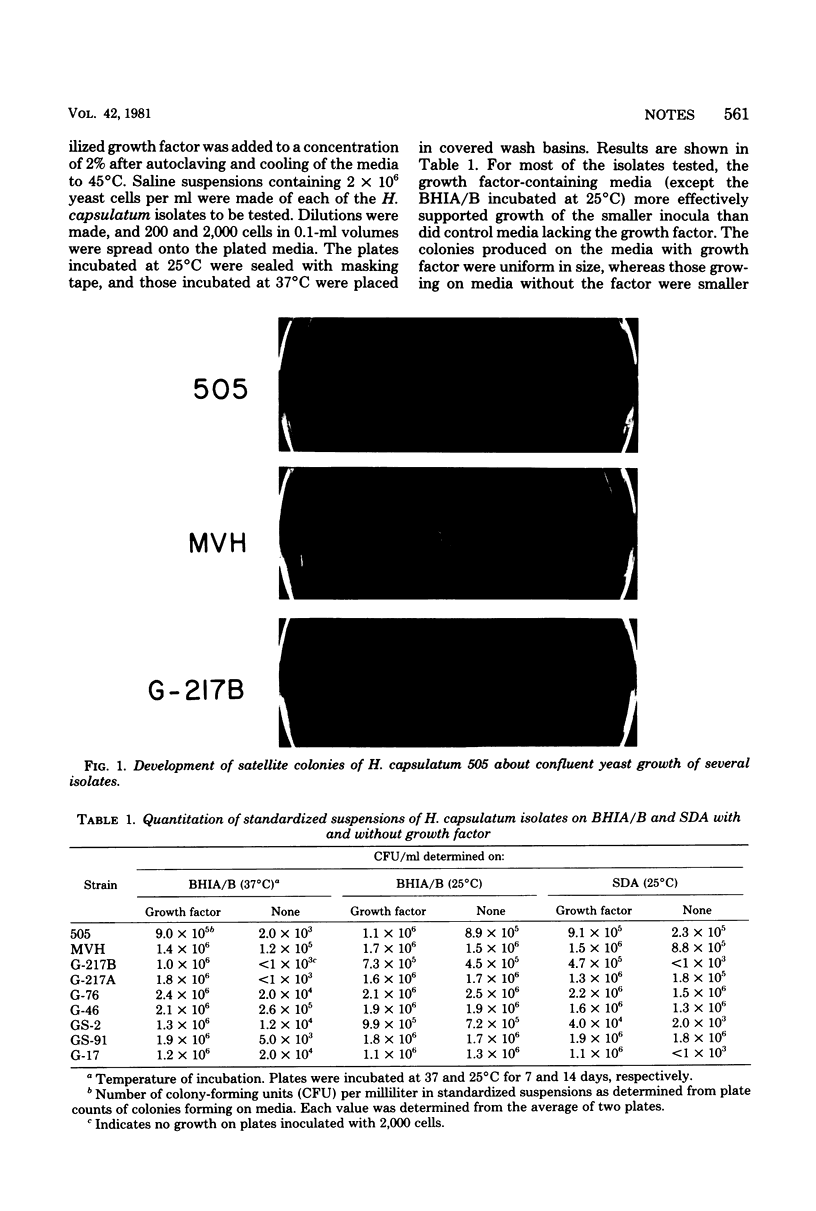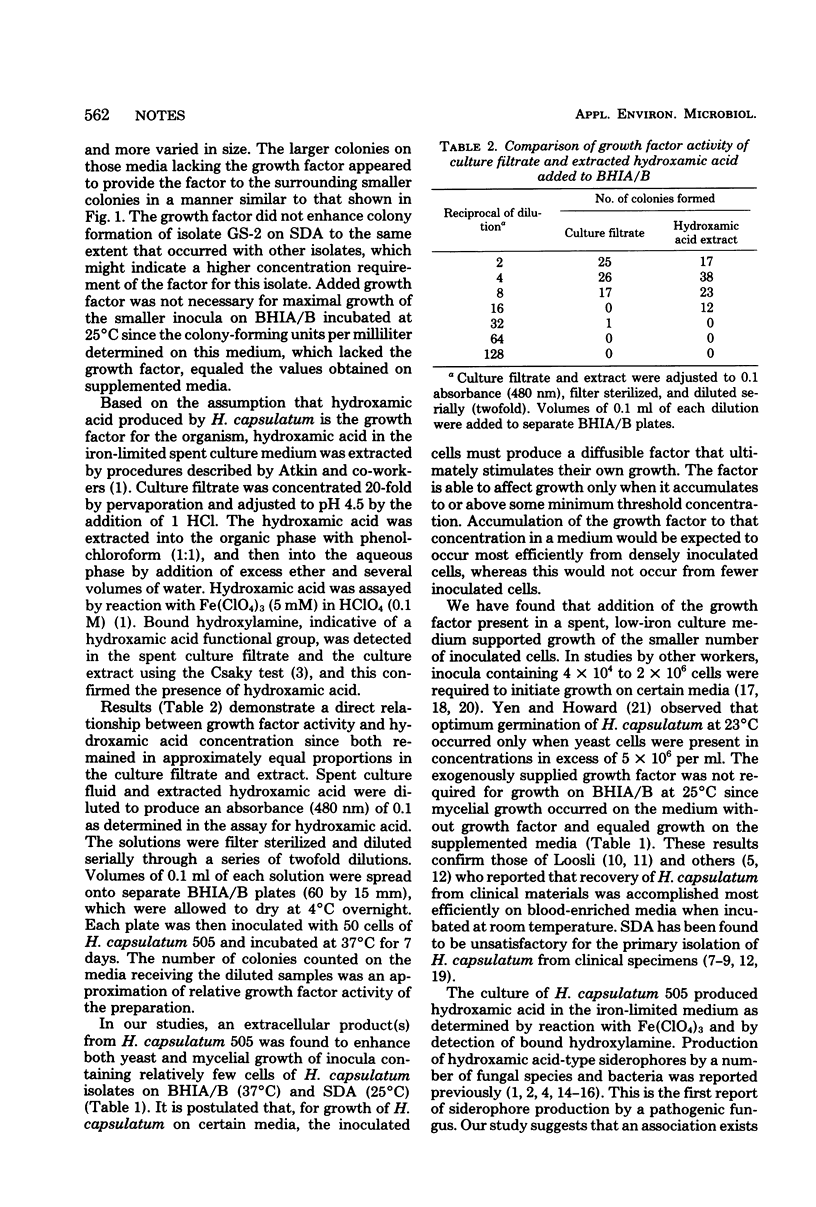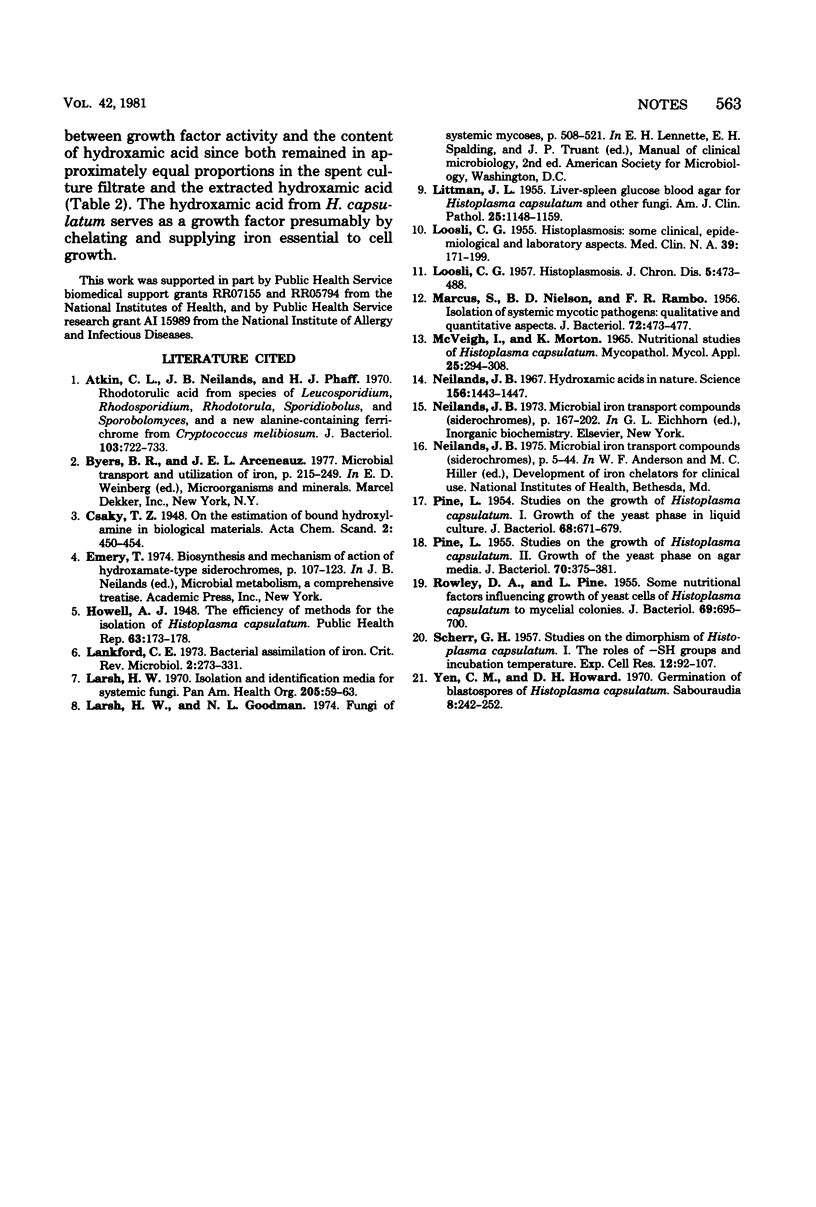Abstract
Growth factor(s) present in a spent liquid medium after culture of the yeast form of Histoplasma capsulatum enhanced both yeast and mycelial growth of nine isolates tested. Hydroxamic acid extracted from the culture fluid displayed growth factor activity.
Full text
PDF



Images in this article
Selected References
These references are in PubMed. This may not be the complete list of references from this article.
- Atkin C. L., Neilands J. B., Phaff H. J. Rhodotorulic acid from species of Leucosporidium, Rhodosporidium, Rhodotorula, Sporidiobolus, and Sporobolomyces, and a new alanine-containing ferrichrome from Cryptococcus melibiosum. J Bacteriol. 1970 Sep;103(3):722–733. doi: 10.1128/jb.103.3.722-733.1970. [DOI] [PMC free article] [PubMed] [Google Scholar]
- LITTMAN M. L. Liver-spleen glucose blood agar for Histoplasma capsulatum and other fungi. Am J Clin Pathol. 1955 Oct;25(10):1148–1159. doi: 10.1093/ajcp/25.10.1148. [DOI] [PubMed] [Google Scholar]
- LOOSLI C. G. Histoplasmosis. J Chronic Dis. 1957 Apr;5(4):473–488. doi: 10.1016/0021-9681(57)90116-9. [DOI] [PubMed] [Google Scholar]
- LOOSLI C. G. Histoplasmosis; some clinical, epidemiological and laboratory aspects. Med Clin North Am. 1955;12:171–199. doi: 10.1016/s0025-7125(16)34770-8. [DOI] [PubMed] [Google Scholar]
- MARCUS S., NIELSON B. D., RAMBO F. R. Isolation of systemic mycotic pathogens: qualitative and quantitative aspects. J Bacteriol. 1956 Oct;72(4):473–477. doi: 10.1128/jb.72.4.473-477.1956. [DOI] [PMC free article] [PubMed] [Google Scholar]
- McVeigh I., Morton K. Nutritional studies of Histoplasma capsulatum. Mycopathol Mycol Appl. 1965 Apr 14;25(3):294–308. doi: 10.1007/BF02049917. [DOI] [PubMed] [Google Scholar]
- Neilands J. B. Hydroxamic acids in nature. Science. 1967 Jun 16;156(3781):1443–1447. doi: 10.1126/science.156.3781.1443. [DOI] [PubMed] [Google Scholar]
- PINE L. Studies on the growth of Histoplasma capsulatum. I. Growth of the yeast phase in liquid media. J Bacteriol. 1954 Dec;68(6):671–679. doi: 10.1128/jb.68.6.671-679.1954. [DOI] [PMC free article] [PubMed] [Google Scholar]
- PINE L. Studies on the growth of Histoplasma capsulatum. II. Growth of the yeast phase on agar media. J Bacteriol. 1955 Oct;70(4):375–381. doi: 10.1128/jb.70.4.375-381.1955. [DOI] [PMC free article] [PubMed] [Google Scholar]
- ROWLEY D. A., PINE L. Some nutritional factors influencing growth of yeast cells of Histoplasma capsulatum to mycelial colonies. J Bacteriol. 1955 Jun;69(6):695–700. doi: 10.1128/jb.69.6.695-700.1955. [DOI] [PMC free article] [PubMed] [Google Scholar]
- SCHERR G. H. Studies on the dimorphism of Histoplasma capsulatum. I. The roles of -SH groups and incubation temperature. Exp Cell Res. 1957 Feb;12(1):92–107. doi: 10.1016/0014-4827(57)90296-3. [DOI] [PubMed] [Google Scholar]
- Yen C. M., Howard D. H. Germination of blastospores of Histoplasma capslatum. Sabouraudia. 1970 Nov;8(3):242–252. [PubMed] [Google Scholar]



